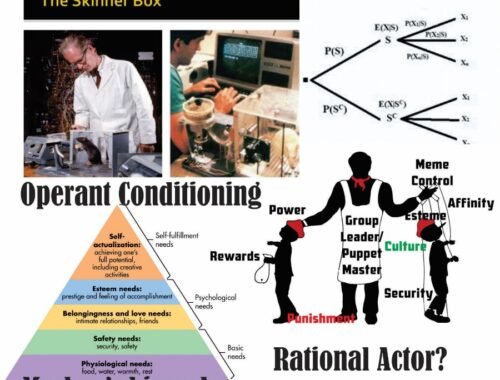
Part 2—What is in a Name?
“What’s in a name? That which we call a rose
By any other name would smell as sweet.”
Romeo and Juliet Act 2, Scene 2. William Shakespeare
Abstract: Names matter. They shape how we deal with people, objects, and concepts. People can also use them to obscure their intent.
There is a cottage industry that tries to prove someone other than William Shakespeare wrote the corpus of plays and poems attributed to The Bard. One interesting theory is Francis Bacon wrote all or many of them. Bacon promised to write a masterwork on the human condition and human psychology, but he apparently never did. However, the school says he wrote The Bard’s plays, and they think these plays are his promised masterwork. Certainly, The Bard’s material could fulfill Bacon’s promise.
On the surface, Juliet’s lines quoted above fly in the face of Confucius’ statement that, “The beginning of wisdom is to call things by their proper name”. Calling a rose a truck simply leaves the path of wisdom. Unless what The Bard is really telling us, you can change a name all you want, but it does not change the object.
Calling something by the wrong name can be misleading or even dangerous. On one level, the flowers in the figure above are roses. On another level, they are Tudor Roses. On yet a third level, they are the Lancaster Rose (red) and the York Rose (white). Today, that is a bit of a yawner. But during the War of the Roses, the difference could get you killed. I suspect The Bard and Confucius are both right. We don’t change the underlying object, but we are unwise not to know the proper name. I will also add that symbols and words have connotative meanings that differ from denotative meanings. We need to know what the symbol means on different levels and on which level we are operating. One symbolic meaning of a rose is secrecy, another is beauty, and, as discussed, the sides in a bloody war.
We seem to have an epidemic of calling things by different names. Some people, despite The Bard’s statement, think you can change the object by changing the name. If we update our thinking somewhat, perhaps they are right in two dimensions.
First, as we have learned with behavior modification and other techniques in psychology and cognitive science, perceptions matter. Take a wall, for example. A nice solid object. For many, it is a barrier. But for Parkour acrobats, it is a platform for  performance. For a ninja, it is an access point. Perceptions matter for just about everything and as we shift perceptions, our understanding of the object changes as well. That is what the media and other do: they use memes and operant conditioning (see part 4 of the series on citizen resiliency) to create a shift in consciousness (see part 1 of the series on citizen resiliency) and perception to change. When we change our perception, the object can change the way we interact with it, which essentially changes the object.
performance. For a ninja, it is an access point. Perceptions matter for just about everything and as we shift perceptions, our understanding of the object changes as well. That is what the media and other do: they use memes and operant conditioning (see part 4 of the series on citizen resiliency) to create a shift in consciousness (see part 1 of the series on citizen resiliency) and perception to change. When we change our perception, the object can change the way we interact with it, which essentially changes the object.
This type of name change is what we see with statue removals. Once symbols of national pride, they are now perceived as symbols of national shame. These statues include those of the founders of the Republic, such as Washington and Jefferson. Interestingly, the desecrated statues also include monuments to Black Union regiments from the Civil War and people that worked against slavery.
The second dimension of change is with a non-physical object, such as an institution, history, a document, an idea, or a concept. This type of change creates a new way to think about the object or to forget about it completely. A useful starting place for this type of change is Charles Beard and his radical redefinition of the American Revolution as an economic rather than political and liberty-based war. While not deliberately Marxist, he potentially danced to the edge with his thoughts on the war as based on class interests. These, however, were more classic Hegelian dialectic and less Marxist since he based them on propertied interests. But when Beard created this consciousness shift, he opened to the door for a radical reconsideration of the founding of the Republic and its history.
This type of name change is exactly what sensemakers/givers do with Rhetorical History. Essentially, they rewrite history to conform to their new vision and support their efforts at consciousness shifts and meme propagation. Their goal is to create the conditions for social change through these shifts in consciousness and deliberate obscuring of “inconvenient truths”.
Critical Race Theory (CRT) uses both dimensions of name change to advocate for wholesale changes in and/or destruction of US institutions. The core claim of CRT is that America embedded racism into every institution, and society must dismantle or fundamentally change them to make US society and politics fair. Perhaps it is no accident that Black Lives Matter (BLM) is a key advocate for CRT. BLM has a core Marxist philosophy, as does CRT.
Using the tenets of Rhetorical History, changing names, and meme propagation, BLM others use CRT to effect fundamental change in US society to meet their specific objectives. The key question is, what are these objectives?
Part 1: Political Movements—Maskirovka and Words Hide Meanings
Part 2—What is in a Name?
Part 3—Controlling the Narrative and Cultural Hegemony
Part4—Mining for Controlling Labels
Part 5—Does Culture Matter?
Part 6—A Riddle Wrapped in a Mystery Wrapped inside an Enigma





